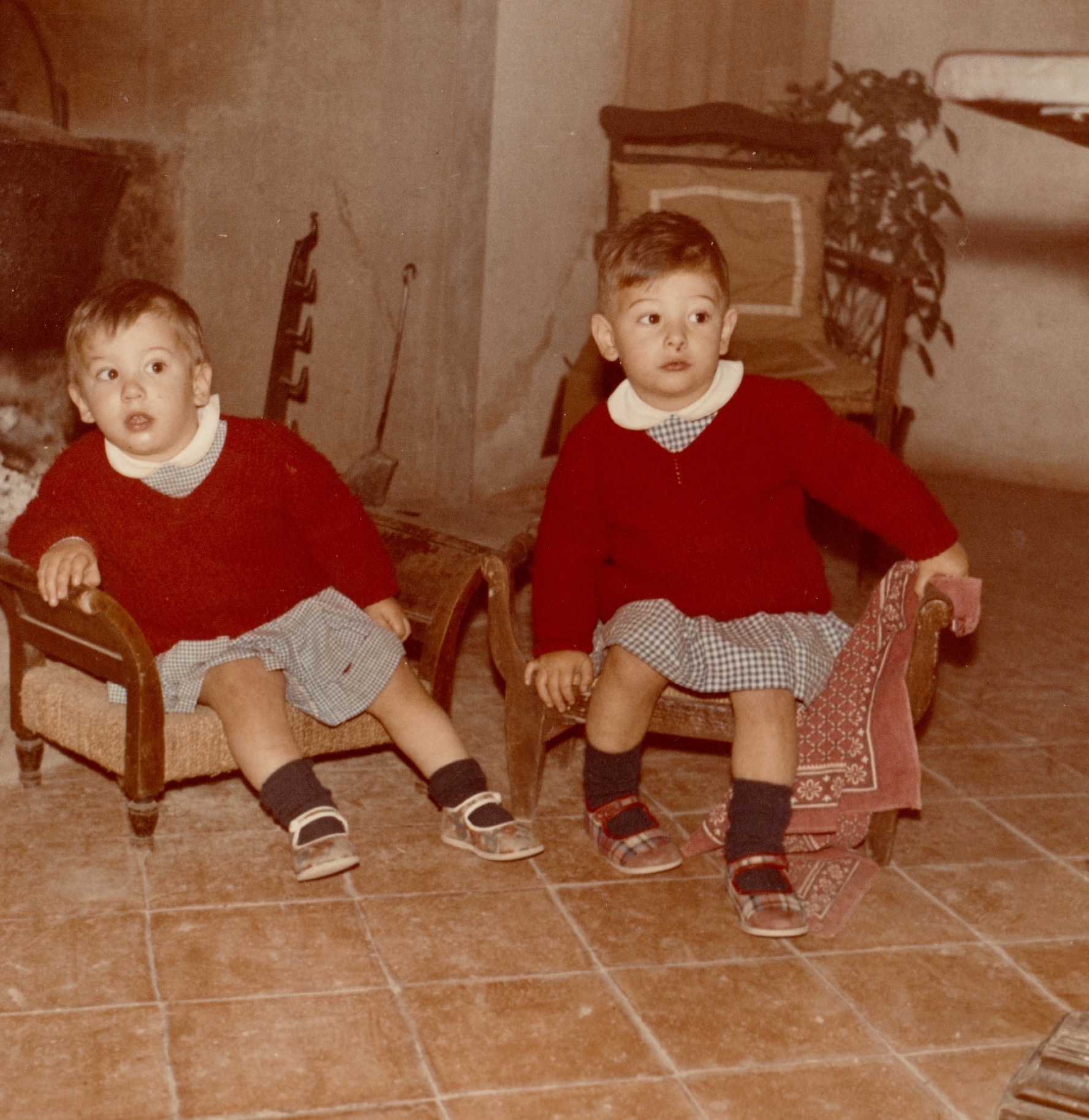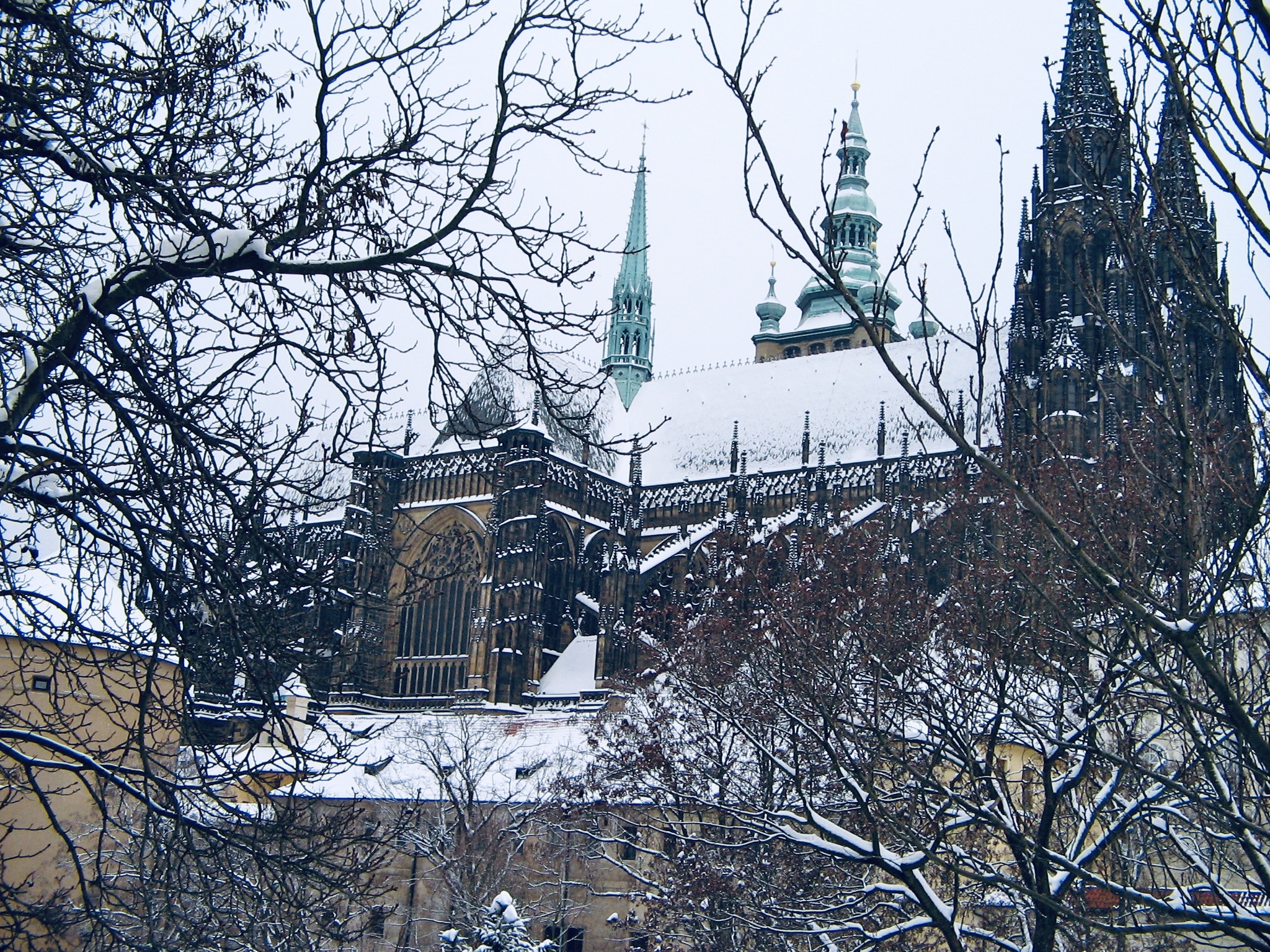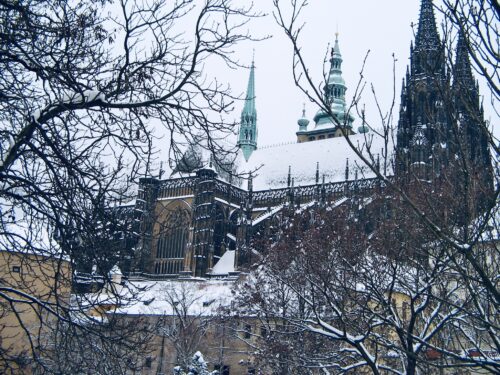
By Francesco Bianchini
Italians are accustomed to central heating and consider it an imperative today, but just fifty years ago there were few Umbrian houses that had it. In my childhood home there was no such thing. Returning at the end of September from summer vacation to our poorly exposed wing in the castle walls, we had to light fireplaces, earthenware and cast-iron stoves, and kerosene heaters. The practice of bed warming with a ‘priest’ was still in use, especially in the rooms of my elderly aunts. They not infrequently, in the cold of winter, had to break sheets of ice in their washbasins to clean their faces, and – when they were not buried under blankets for weeks – moved around the house carrying copper or brass warmers that they set in wooden footrests adorned with artistically-pierced metal sheets. In the dining room of my first ten years, the lights of chafing dishes glowed on the beech wood sideboard in front of the fireplace, keeping food from getting cold while waiting for us all to gather. Easter cleaning aired out the house, and the smell of fireplaces and charcoal, with which we ourselves were soaked from head to toe, vanished. The aroma of wisteria and lilacs in the garden perfumed the air, and mixed with the good smell of waxed terracotta floors, and with the fumes of post-Lenten preparations in the kitchen.

In the age of no heating, me and my brother Fabio at the castello of Collevalenza

Fill the pot with coals, throw the covers over: voilà, the ‘priest’ is in the bed!
In the years just before the energy crisis of 1973, my family finally decided to install a modern heating system in the more central section of the house. During the months of plumbing work, we moved – children, parents and aunts – into the local convent of Spanish nuns, which had every comfort. When we returned to our new lodgings there was only one fireplace left – in the dining room – which we kept lit out of habit, and because it cheered the eyes. Heat drifted indifferently even in unused rooms and along the corridors because all were inexorably arranged en enfilade and up and down stairs. We lasted but a few years with that extravagance until one winter, when money for heating ran out, we had to take a step back. The oil truck didn’t arrive so the towering old terracotta stoves were reinstated, ducts cut through walls and ceilings. We dressed in heavier clothes and did our homework hugging the heaters.

The stove of my memory
Italian winters, however harsh, and our homes, however inadequately heated, are just jokes compared to the severer winters of northern Europe. One year Dan, the cat Arcadio, and I traveled to Prague to spend the entire month of January. We drove across half of Europe: the humid Po valley, the snowy mountains of the Tyrol, the frozen sod of Bavaria. When we hit the low hills of central Bohemia a dirty snow and livid sky merged, condensation clouded the car windows, and the windshield wiper struggled to sweep away the gloomy sleet. We proceeded with extreme caution so as not to skid on the icy asphalt and, once in town, put the car in a garage and didn’t pick it up again until the end of our stay. It wasn’t long before we realized that we didn’t have adequate clothing and had to stock up on wool gloves, scarves, thick socks and boots to deal with the ice and snow – even those ridiculous rabbit-fur and multicoloured wool hats to protect our foreheads and ears. On the bright side, our apartment in a Viennese Secession building had triple glazing on the windows, feather blankets on the beds, and heating without ifs and buts.

On our wintry walk, Saint Vitus cathedral
The winter cuisine of countries like the Czech Republic has the task of protecting people from the cold by producing nice layers of fat. Whether we dined on the dish of the day in a plain restaurant, or à la carte in an historic inn before going to the opera, I cherish the memory of an indistinct series of hearty dishes of meats and vegetables drowned in silky sauces, pungent with paprika and cumin, or scented with dill – but always with an ever-present accompaniment of bread dumplings. These calorie, carbohydrate, fat, and protein bombs are staples in Central and Eastern European fare, introduced as a way to reuse stale bread, but can become a complete and flavorful dish on their own. Czech bread dumplings are simple to make: flour, milk, eggs, and cubes of stale bread kneaded into a loaf or roll. They are then boiled, sliced, and served – perfect to mop up sauces.

War(m) bonnets, Czech style
In that frosty month of several years ago, Prague revealed its musical soul to us like an immense orchestra tuning its instruments. The squealing of streetcars, clinking of glasses in beer halls, lamentations at the Jewish cemetery; the cracking of ice, the crunching of snow. In the heart of winter Prague warmed us with the music of Mozart and Dvorak, with baroque wonders of its palaces, gold and glittering domes, the whimsey of Emperor Rudolf, the flight of the Winter King.







